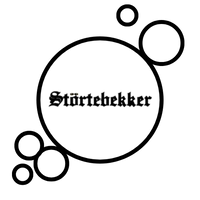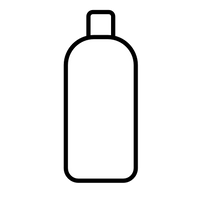Martin is a thoroughbred entrepreneur and passionate barbershop-goer. He has delved deep into the world of shaving and beard care and wants to bring the unique barbershop feeling into every bathroom.
At Störtebekker, everything revolves around classic shaving. But what exactly is classic shaving, or more importantly, where does it come from? Humans have known about shaving for tens of thousands of years. It has been practiced in various ways throughout all times and places — and particularly with a wide variety of tools. In this post, we want to give you a brief introduction to the most important milestones in the history of shaving to show you the tradition that we at Störtebekker are continuing.
Tribal and Primitive Cultures - The Beginnings of Shaving
Through archaeological finds and contact with still-primitive-living tribes today, it is known that humans began removing their body and facial hair in their prehistory. Over 20,000 years ago, however, completely different gadgets were used for this purpose. For example, the men of many tribes simply used two shells to pluck their hair from their facial skin. Others directly burned off their beard hair. Finds of sharpened flint and predator teeth also suggest that early forms of razors
Whether people from primal tribes shaved for purely functional reasons or already for aesthetic ones is not entirely clear. Some researchers speculate, for example, that many men in the Ice Age got rid of their facial hair to prevent it from freezing. From the accounts of the colonial lords of America, however, it is known that they encountered tribal members who removed all their body hair - a clear indication that there was already an aesthetic background to shaving.
Shaving in Antiquity - The Beginning of Aesthetic Hair Removal
But aesthetic shaving came with early civilization. As early as 10,000 BC, some Egyptians shaved initially with simple scrapers made of copper. Members of the noble class later even resorted to those made of gold. Depending on the ruling dynasty and class affiliation, other shaving regulations were in vogue - for priests, for example, it was often mandatory to completely shave off their beards. Also, already the Egyptians used caring natural products such as almond oil or cedar oil, with which a line of tradition of our present care products to them.
Even the later ancient high cultures had their very own shaving tools. The Romans used, presumably, largely sharpened pumice. Other peoples such as the Greeks and the Macedonians used tools made of simple metal alloys from 3000 BC. Macedonian King Alexander the Great is said to have issued a strict beard ban to his soldiers so that they could not be pulled in combat. From the Bronze Age (ca. 2200 - 800 BC) then also spread the first fixed razors made of bronze, which in their form comparable to today´s remained roughly. is even
From the Early Modern Age to Modern Shaving
According to the current state of research, the Middle Ages - at least in our latitudes - did not bring about any further developments in shaving tools. However, with the beginning of modern times, a big innovation step came with the folding razor, which made razor blades safer and more transportable. Especially the English Sheffield became known throughout Europe from the 17th century onwards for its high-quality folding razors. In Europe and the Near-Middle Eastern region, the art of barbers spread, who were in high demand with their products that not everyone had at home.
With the beginning of the 20th century, there was a clear shift towards simple and fast self-shaving. In 1901, the legendary American inventor King C. Gillette introduced the modern safety razor, where the blades are not sharpened, but replaced after a few shaving sessions. From the soldiers of World War I - who could seal their gas masks airtight through clean shaving - to the men of our time, the use of the razor, which offers a significant cut protection with its slightly protruding blade compared to the razor, is the most popular form of shaving. Over time, the original razor, equipped with a double-sided steel blade, has evolved into today's system razors. These now combine up to 5 blades in a razor head.
Shaving Today - Modern Fast Pace or "Back to the Roots"?
Today, mass-produced items dominate shaving, promising speed and simplicity. So it's the many different system razors that most men reach for in the bathroom in the morning. But as in so many areas, the realization is gaining ground here too that the modern path of least resistance is not always the best. Modern system razors are very expensive in the long run, extremely unecological, and most importantly: they simply do not achieve the optimal shaving result.
With the classic safety razor, the straight razor, with shaving brush and shaving soap, and other accessories of classic shaving, you need more time and patience. But it's worth it.
Here you can find our Störtebekker shaving soap for sale.
With high-quality products of this kind, you achieve the cleanest shave possible and avoid unpleasant and unsightly irritation of your skin. You experience your shave as a conscious practice, something you immerse yourself in; as a meditative routine, instead of something you have to rush through as quickly as possible. In the long run, you also do something good for your wallet and the environment.
Since when have you been a fan of classic shaving with safety razors and/or straight razors?
You might also be interested in:
2 Comments
Ich habe viele Jahre in den Tropen gelebt und gearbeitet. Ich war mit Elektrorasierern unzufrieden, da eine leicht schwitzende Haut keine saubere Rasur möglicht machte. Ich rasiere mich nass seit etwa 35 Jahren oder so. Ich genieße diese paar Minuten, die meine Rasur dauert, den Duft der Seife und die Reinheit, die noch lange anhält. Übrigens nutze ich täglich einen alten Emailbecher mit Hänkel für das heiße Wasser. Er begleitete mich schon seit den 90iger Jahren auf meinen Segelreisen um das Kap Horn und nach Grönland.
Hallo, ich nutze seit ca. einem Jahr einen Rasierhobel und bin begeistert.
 Free shipping from
49€
Free shipping from
49€
 100 days return
100 days return
 Festes Shampoo
Festes Shampoo Body Bar
Body Bar Handsoap
Handsoap Pomade
Pomade Gesichtspflege
Gesichtspflege Deo
Deo Hair & Body Wash
Hair & Body Wash Haar Booster
Haar Booster Safety razor
Safety razor Straight razor
Straight razor Shaving soap
Shaving soap Razor blades
Razor blades Shaving accessories
Shaving accessories Beard care
Beard care Beard styling
Beard styling



















